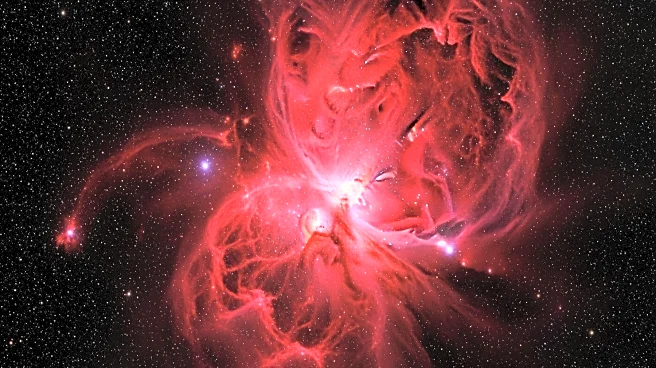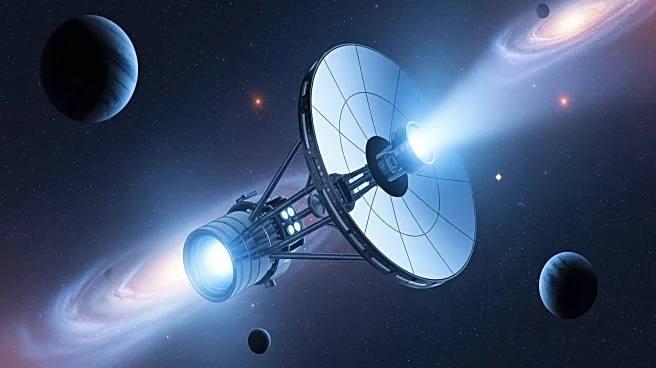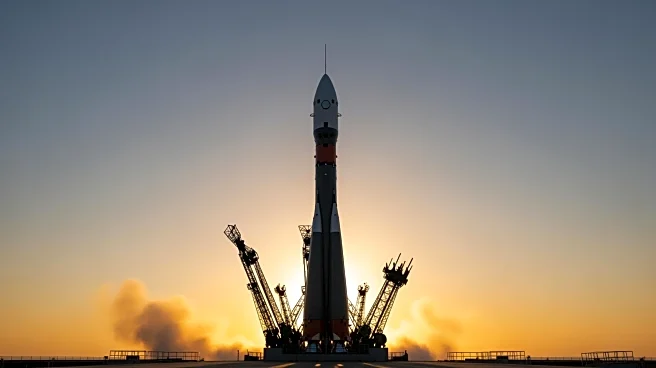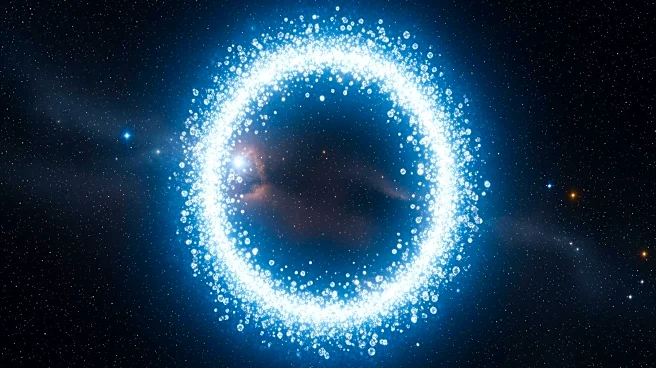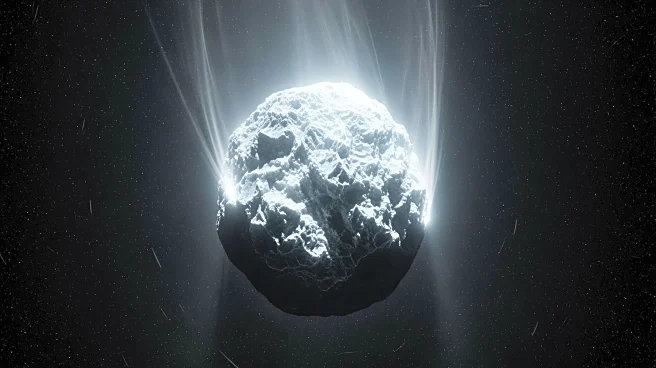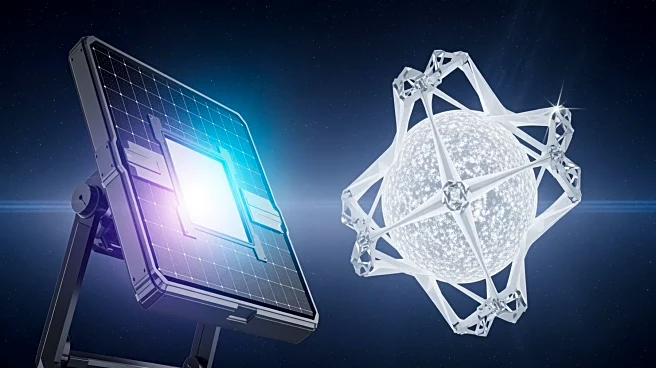What's Happening?
NASA's James Webb Space Telescope has captured unprecedented details of the Red Spider Nebula using its Near-InfraRed Camera (NIRCam). The image, released on October 26, 2025, showcases the nebula's expansive
lobes, which resemble the 'legs' of a spider. These lobes, depicted in blue, are illuminated by light from H2 molecules, consisting of two hydrogen atoms bonded together. The lobes extend across the entire field of view of NIRCam, forming closed, bubble-like structures that stretch approximately 3 light-years each. The nebula's central outflowing gas has inflated these bubbles over thousands of years, providing new insights into the structure and dynamics of planetary nebulae.
Why It's Important?
The new imagery from the James Webb Space Telescope offers significant advancements in our understanding of planetary nebulae, which are crucial for studying the life cycle of stars. By revealing the full extent of the Red Spider Nebula's lobes, scientists can better comprehend the processes that govern the formation and evolution of such structures. This information is vital for astrophysics, as it helps refine models of stellar evolution and the chemical enrichment of the galaxy. The findings also demonstrate the capabilities of the James Webb Space Telescope in providing high-resolution imaging and spectroscopy, reinforcing its role as a pivotal tool in space exploration and research.
